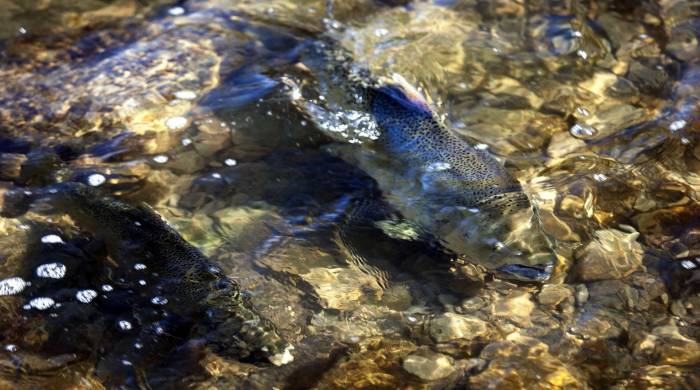One in (4) Freshwater fish species are in danger of EXTINCTION.
- By : James Bryson
- Category : "JB", Conservation, Environmental, International Relations, World Events

One in four species of freshwater fish is in danger of extinction, according to the International Union for Conservation of Nature (IUCN), which, for the first time, has made a global assessment of these fish in the preparation of its Red List. of threatened species.
Within the framework of the Dubai climate summit, COP28, the IUCN has published the updated list which includes 157,190 species, of which 44,016 (28%), some 2,000 more than in the previous review, are in danger of extinction.
The update shows the strong links between the climate and biodiversity crises, which must be addressed jointly, according to the director general of the IUCN, Grethel Aguilar, who has warned that the decline of species is an example of the layers of warming. . global.
The first comprehensive assessment of the world’s freshwater fish species reveals that 3,086 of the 14,898 species analyzed (25%) are at risk of extinction and at least 17% are affected by climate change due to the decline of flows, a greater presence of seawater in rivers or the changes in the seasons that they cause.
Added to this are the threats of pollution, which affects 57% of freshwater fish species at risk of extinction; dams and water extraction (affect 45%), overfishing (25%) and invasive species and diseases (33%).
Freshwater fish represent more than half of the known fish species in the world, “an incomprehensible diversity given that freshwater ecosystems concentrate only 1% of the aquatic habitat, and are vital for the resilience of ecosystems, according to Kathy Hughes, co-president of the UICE, an expert on the subject.
Therefore, ensuring that freshwater ecosystems are well managed and continue to flow freely with good quality water “is essential to halt species decline and maintain food security, livelihoods and economies.”
Among the species analyzed, the Atlantic salmon stands out, which goes from least concern to almost threatened. Its population fell by 23% between 2006 and 2020 and its presence is restricted to a small portion of the rivers that it inhabited a century ago in northern Europe and North America due to multiple threats during its migrations between sea and rivers.
Climate change affects all stages of their life cycle, influencing the development of young salmon, reducing the availability of prey and allowing invasive exotics to expand their range.
Dams and other barriers block access to development and feeding areas, and water pollution and sedimentation, primarily due to logging and agriculture, cause increased mortality of young salmon. Additionally, fish farm escapes threaten many wild populations.
Due to their high risk of extinction, the green turtles of the Central South Pacific and Eastern Pacific (Chelonia mydas) stand out, for which climate change is a threat, since high temperatures result in lower hatching success, an increase in the level of The sea threatens to flood the nests and drown the hatchlings, and the seagrasses are in danger.
The report also includes “successes in conservation”, such as that of the scimitar-horned oryx (Oryx dammah), which has gone from “extinct in the wild” to “endangered” thanks to efforts to reintroduce it to Chad.
The status of the saiga antelope (saiga tatarica), which lives in Kazakhstan (98% of the entire population), Mongolia, Russia and Uzbekistan, has also improved from “critically endangered” to “near threatened”.
According to the same source, the bigleaf mahogany (swietenia macrophylla), one of the most sought-after timber trees in the world, has gone from “vulnerable” to “endangered” due to growing commercial interest.
New research, according to the IUCN, reveals that its presence in Central and South America has been reduced by 60% in the last 180 years due to an unsustainable harvest of its valuable wood and the agricultural and urban invasion of the tropical forests in which it grows. .
Mahogany continues to be sought after in the United States, Western Europe and China to make high-quality furniture, plywood, decorative and ornamental elements, and musical instruments.
Despite being protected by national and international legislation and the efforts of all range states, illegal logging and trade continue to exist due to high demand. *****SEE DARIEN*****



No Comments